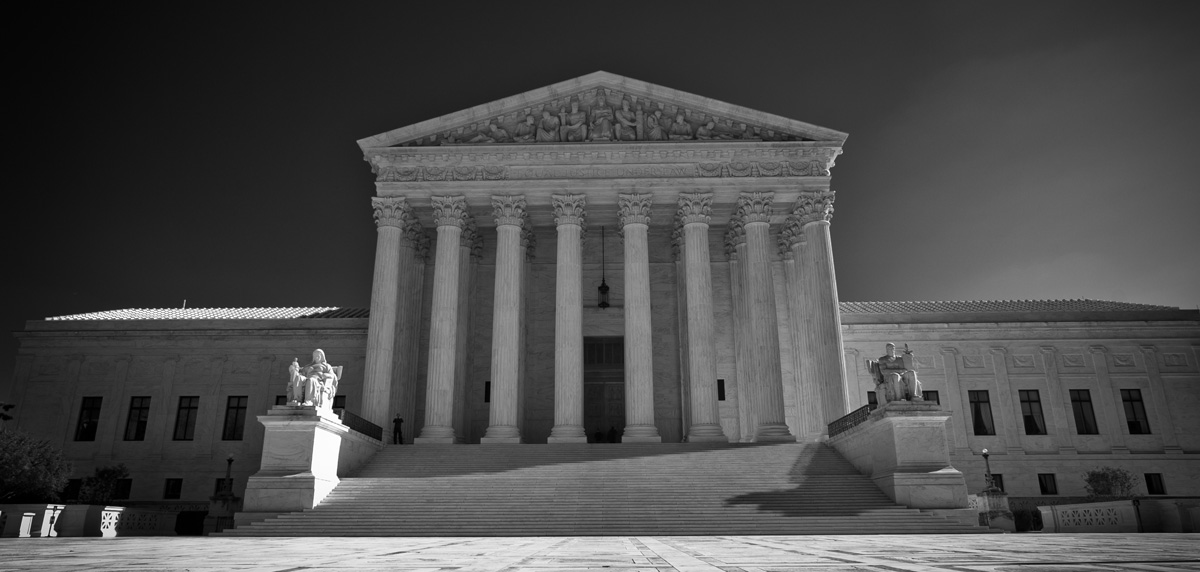
Within the next few weeks, possibly days, the Supreme Court is expected to rule on two cases that will have a major impact on the fairness of elections and voting. It’s not hyperbole to say that these decisions could shape the nature of American elections for decades.
Gill v. Whitford. This case centers around Wisconsin and how Republicans redistricted the state in 2011 to create an extremely favorable map for their party. This obvious partisan gerrymander entrenched Republican control of state government and explains how in 2012, Republicans won only 48.6% of the vote in statewide elections for the Wisconsin Assembly but won 60 of the 99 seats. In November 2016, a Federal Court ruled that it was an unconstitutional partisan gerrymander that violated the Equal Protection Clause and the First Amendment. Wisconsin appealed the ruling to the Supreme Court. It was argued last fall, and the decision is expected this month.
Benisek v. Lamone. In a similar but related case to Gill vs. Whitford, plaintiffs challenge Maryland’s partisan gerrymander of the state’s congressional districts in 2011. In many ways, it’s a mirror image of the Wisconsin case; here, you have Republicans challenging the maps drawn by Democrats in the state for essentially the same reasons: a claim that the maps were unconstitutional. Two lower courts dismissed the suit, but the Supreme Court chose to review it and heard arguments in March of this year.
What’s at stake? The most recent significant case on the matter was in 2004, when the Supreme Court ruled 5-4 against a challenge to Pennsylvania voting maps, declaring that the court can’t determine what is or isn’t excessive partisan gerrymandering and that “no judicially discernible and manageable standards for adjudicating such claims exist.” But the catch is that Justice Kennedy, who sided with the majority, left the door open for a different ruling in the future, suggesting that the problem was significant, and that “if workable standards do emerge to measure these burdens, however, courts should be prepared to order relief.” In Gill vs Whitford, plaintiffs feel they’ve come up with a standard to “measure” the burdens of gerrymandering: the “efficiency gap“: a statistical measure of how much disproportionate advantage a political party has gained as a result of gerrymandering voting maps.
So basically, once again, Kennedy the swing vote in 2018. If he sides with the conservatives on the court, there will effectively be no legal way to challenge heavily gerrymandered voting districts, which would impact not only Wisconsin and Maryland, but states like North Carolina, Texas, and Ohio. It might encourage even more egregious and extreme gerrymandering in the future.
If he sides with the liberals on the court and it rules that the challenges in Gill and Benisek are valid, it could dramatically reshape the voting districts in many states where gerrymandering his distorted political representation for years.
Either way, the stakes can’t be much higher.
Learn more:

More Election and voting rights news you might have missed this week…
1. The third Supreme Court voting rights case
Overshadowed by the bigger Gerrymandering cases is a third Supreme Court voting case, Husted v. A. Philip Randolph Institute, in which plaintiffs challenged Ohio’s practice of removing voters from the eligible voter list if they didn’t vote for two years and if they didn’t respond to a postcard that was sent to confirm their mailing address. Georgia has a similar practice that could be affected by this decision. It’s a particularly aggressive practice that could disenfranchise thousands of voters who missed one election and never took the time to respond to seemingly mundane address verification postcard. Stay tuned for a ruling on that this month…
2. Old enough to drive, old enough to vote?
More on the campaign to lower the voting age to 16. (Rainesford, Stauffer, ThinkProgress)
3. A USA Today writer’s adventure training to be a poll worker on Mississippi
How “I learned all about voter ID, MAGA hats, belligerent voters (‘just smile’) and crimes that disenfranchise when I trained as a poll worker in Mississippi.” (Margaret McMullan, USA Today)
4. The North Carolina legislature might try to bring back Voter ID as a constitutional amendment
Courts already struck down North Carolina’s photo ID law. But the Republican-controlled state legislature wants to keep trying. Always something with these guys.
5. Accidental gerrymandering?
The New York Times has a fascinating video and story on the “odd political alliance behind today’s gerrymandering” which shows how extreme gerrymandering isn’t just the result of political malice, but also of unlikely political alliances and unintended consequences of the Voting Rights Act of 1965. (Clyde Haberman, New York Times)